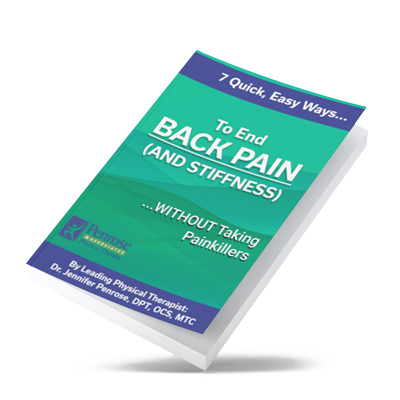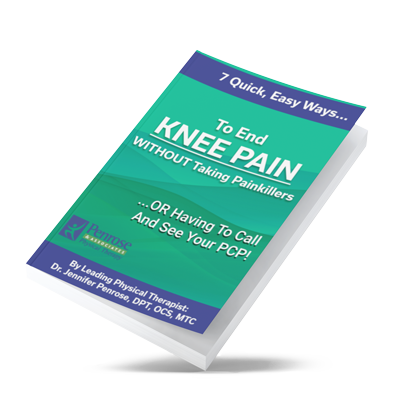LACEY (WA) – If you’ve been following our osteoporosis and balance and falls series over the last 5 weeks, you might be wondering how to put all of this information together. In today’s article, I’m going to help you do just that by telling you a story about a lady we worked with recently in the clinic. Let’s call her Susan. As I go through Susan’s story, I’m going to tell you how we assessed her 3 Balance Systems as well as the other various factors that contribute to her balance. Then we’ll discuss how we used this information to design a successful treatment plan for her.
Here’s Susan’s story in a nutshell: Susan came into the clinic after she fell 6 months ago while walking to her car in a gravel parking lot. She ended up with a couple bumps and bruises, but otherwise was uninjured. However, over the next several months, she became more and more worried about having another fall, so she started limiting her activity level, and she specifically avoided things like walking on uneven surfaces (since walking on the gravel was part of why she fell). She decided to come in for physical therapy because lately she’s been feeling even more unsteady on her feet, and she’s had several near-falls where she’s had to catch herself on a piece of furniture or a wall inside her home. If you have had a few falls where you caught yourself or just a few bumps and bruises you may not realize what weaknesses may be contributing to these little mishaps! Hopefully this story will make you think about what might be contributing to your less steadiness.
After talking with Susan and assessing her various balance systems, her PT came up with some key findings. On the Romberg (a special balance test in the clinic), she loses her balance quickly when she closes her eyes, especially when standing on the foam (unstable surface). This indicated weakness in her inner ear (vestibular system). She has limited strength in her ankles, hips and core. (When you don’t have adequate strength in your ankles, legs/ hips, or core you cannot react as well if needed and you may start dragging one foot or shuffling etc.).
She has normal sensation, with no signs of neuropathy, and no signs of vertigo (which we touched on last week!). Susan also has a sore left hip, which makes it hard to put weight on her left leg at times and causes her to shift her weight towards her right side when standing and walking. As you can see, there were several factors contributing to Susan’s poor balance abilities, including: inner ear weakness, limited strength, altered walking (due to fear) and left hip pain. In order to design a successful treatment approach for Susan, her therapists had to take all of these factors into account. Here’s what successful treatment looked like for Susan:
- Balance exercises in the clinic to improve her inner ear function.
- Specific strengthening exercises for her ankles, hips, and core.
- Hands-on treatment of her hip pain, as well as specific stretches.
- Gait training (working on walking mechanics with feedback from therapists).
And the result? 6 weeks later, Susan made improvements in all areas.
Her performance on the Romberg is significantly better, and she can now maintain all balance positions for up to 30 seconds without falling. She’s also walking normally again, with longer steps and without looking at the ground. And since her hip isn’t bothering her, she’s putting weight on both legs equally, which also improves her balance. (Plus, if you don’t put equal weight on each leg you can end up with another problem like knee pain, back pain etc.). And most importantly: Susan has regained her confidence and is no longer afraid that she’s going to fall when doing her daily activities. She’s back to taking long walks with her friends, even if there are hills and uneven terrain at times. She knows that she’ll have to keep working hard to keep herself in top shape, but she has all the tools she needs to keep her balance sharp and her muscles strong.
I hope Susan’s story helps you understand 2 things. First, if you’re worried about your balance, you’re not alone. And second, it’s very likely that you don’t have to just put up with it. With the right treatment approach, it’s very likely that you can make significant improvements to your balance and get back to enjoying those activities that you’ve had to give up. Talk to you again next week! The author, Jennifer Penrose, is a Physical Therapist and owner of Penrose Physical Therapy.
If you have any questions about balance and falls, you can call (360) 456-1444 or by email at info@penrosept.com.






